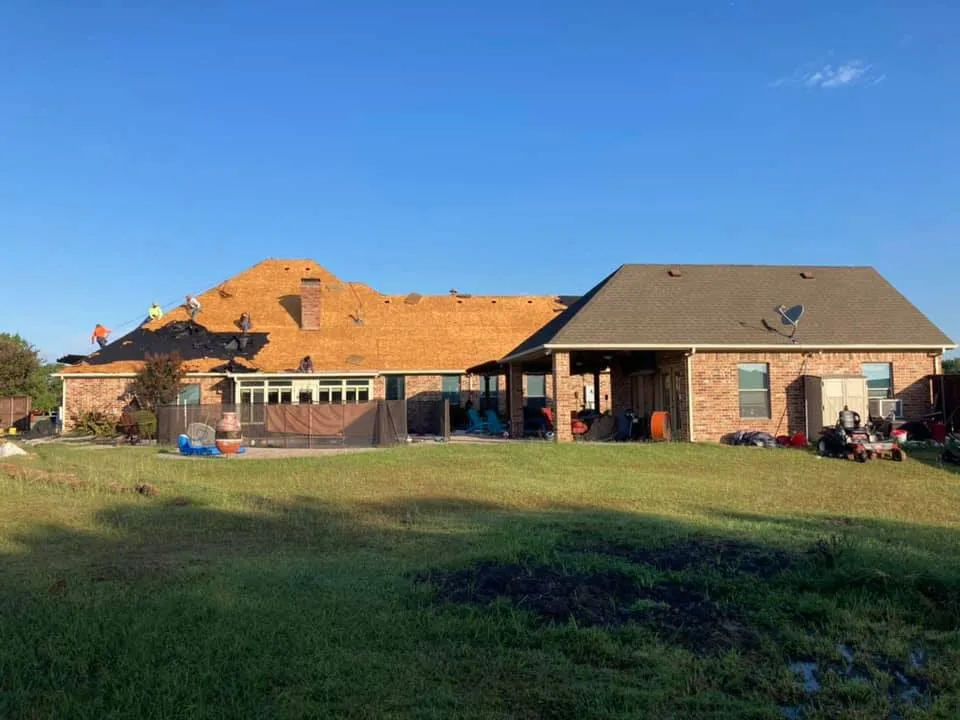
Are you looking for a way to protect your home from the wrath of storms? Everyone knows that strong winds and heavy rain can cause significant damage to the average roofing system. But how do you decide which roofing material is best suited for protecting your home against such extreme weather conditions?
This guide explores the resilience battle by comparing tile roofing vs. shingles roofing in protecting your home against storm damage. So let’s get started!
Tile roofing is a roofing material designed to keep out rain and is made from materials like clay, concrete, metal, and plastic. Roof tiles are hung from the framework of a roof by fixing them with nails, usually in parallel rows. Tile roofing is durable and resistant to high winds and hail. It is usually hung in parallel rows, with each row overlapping the row below to exclude rainwater and cover the nails that hold the row below. There are also roof tiles for special positions, particularly where the planes of the several pitches meet. They include ridge, hip and valley tiles.
Tile roofing is available in various shapes and profiles, including flat tiles, plain clay tiles, imbrex and tegula, Roman tiles, pantiles, monk and nun tiles, interlocking roof tiles, and hip tiles. While tile roofing can be expensive to install, it is a long-lasting, energy-efficient option that can withstand various weather conditions.
Roofing tiles are a great choice for homeowners who want a durable and long-lasting roofing material. Here are some situations where roofing tiles may be a good choice:
Shingle roofing is a roofing material consisting of individual overlapping elements, typically flat, rectangular shapes laid in courses from the bottom edge of the roof up. Shingles are held by the roof rafters and are made of wood, slate, flagstone, metal, plastic, and composite materials like fiber cement and asphalt shingles. Shingles are installed from the bottom upward with a starter course and the edge seams offset to avoid leaks. Many shingle installations benefit from being placed on top of an underlayment material like asphalt felt paper to prevent leaks from wind-driven rain and snow and ice dams in cold climates.
Shingle roofing is available in various styles, patterns, textures, and colors. They are a very common roofing material in the United States and are relatively affordable compared to tile roofing.
Roof shingles are a popular choice for homeowners who want a cost-effective and easy-to-install roofing material. Here are some situations where roof shingles may be a good choice:
Here is a detailed comparison between the two to help you make an informed decision:
Tile roofing is renowned for its durability, with many tiles lasting up to 50 years or more. Tile roofs are resistant to extreme weather conditions like hail, wind, and fire. This makes them an ideal choice for homeowners in areas prone to severe storms. In contrast, shingles are less durable than tile roofing and are more prone to damage from heavy winds, hail, and flying debris. While shingles are more affordable, they may require frequent repairs and replacements.
Roofing tiles vs. shingles Water-resistance
Tile roofing is designed to keep out rainwater and is often used in areas with heavy rainfall or frequent hurricanes. The tiles are hung in parallel rows and overlap, forming a barrier preventing water from seeping through. On the other hand, shingles may require additional waterproofing layers to prevent water from penetrating through the roof. This means that shingles may be more prone to leaks and water damage during heavy rainfall.
Roofing tiles vs. shingles Wind resistance
Tile roofing is a heavyweight material and is, therefore, more resistant to wind damage than shingles. With proper installation, tile roofing can withstand winds of up to 150 miles per hour, making it an ideal choice for areas prone to hurricanes and tornadoes. In contrast, shingles can be easily blown off during strong winds, leaving your roof vulnerable to water damage.
Roofing tiles vs. shingles Fire resistance
Tile roofing is made from fire-resistant materials like clay or concrete, making it an ideal choice for areas prone to wildfires. On the other hand, shingles are often made from flammable materials like wood or asphalt, making them more susceptible to fire damage. While some fire-resistant shingles are available, they may be more expensive and less common than standard shingles.
Roofing tiles vs. shingles Maintenance
Tile roofing requires less maintenance than shingles, making it a popular choice for homeowners who want a low-maintenance roof. Once installed, tile roofs can last for decades with minimal upkeep. In contrast, shingles may require frequent repairs and maintenance to keep them in good condition. This can include replacing damaged or missing shingles, sealing gaps, and repairing leaks.
Roofing tiles and shingles can be installed on most roofs, including flat, sloped, and curved roofs. However, some materials may be better suited for certain types of roofs than others, so it’s important to consult with a professional roofing contractor to determine the best option for your specific roof.
Roofing tiles made from natural materials like clay or slate are generally more environmentally friendly than shingles often made from petroleum-based materials. However, eco-friendly shingle options are also available like those made from recycled materials or with solar-reflective coatings.
Both roofing tiles and shingles can be repaired if they become damaged. However, the process for repairing each material can be different, and it’s important to hire a professional roofing contractor with experience in repairing your specific type of roofing material.
Roofing tiles are generally more durable and resistant to storm damage than shingles due to their heavier weight and an interlocking design. However, shingles can also provide adequate protection if installed properly and with high-quality materials. It’s important to consult with a professional roofing contractor to determine the best option for your specific climate and weather conditions.
It is not recommended to install roofing tiles or roofing shingles yourself unless you have extensive experience and knowledge in roofing. Improper installation can lead to leaks, damage, and even injury. It’s best to hire a licensed and experienced professional to ensure the installation is done correctly and safely.
Both roofing tiles and shingles can be energy-efficient, depending on the material and color chosen. Some materials like asphalt shingles come in lighter colors that reflect sunlight and heat, which can help reduce cooling costs in hot climates. Clay and concrete tiles are also good insulators and can help regulate temperature in hot and cold climates.
Switching from one roofing material to another is possible, but it can be a complex process that requires careful consideration and planning. Switching from roofing tiles to shingles, for example, may require additional structural support to handle the weight difference. It’s best to consult a professional roofer to determine if a switch is feasible and what the process would entail.
When it comes to protecting your home against storm damage, both tile roofing and shingles have their unique advantages and disadvantages. While tile roofing is durable and long-lasting, it can be heavy and expensive to install. On the other hand, shingles are cost-effective and easy to install but may not be as durable as tile roofing.
Ultimately, the decision when comparing tile roofing vs. shingles depends on various factors, including your budget, climate, and personal preferences. If you’re still unsure which option is best for your home, it’s best to consult our professional roofers, who can assess your needs and provide expert advice. Don’t wait until a storm damages your roof; contact us today to schedule a consultation and ensure your home is protected.












